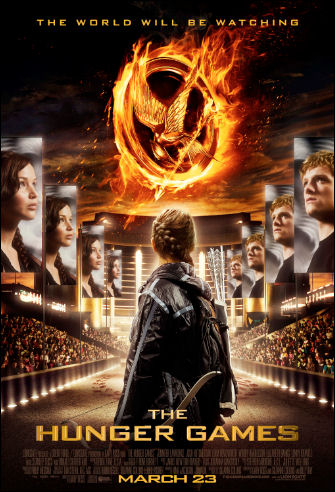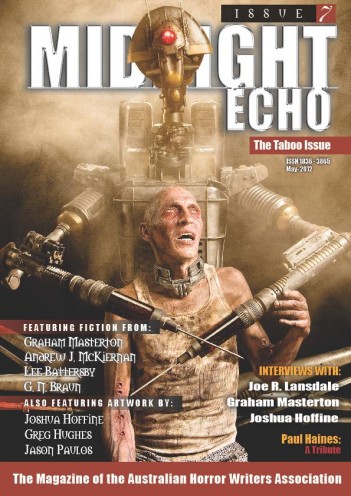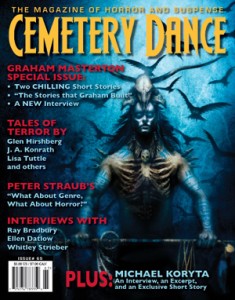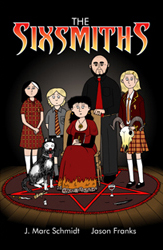DISCLAIMER: Thirteen O’Clock is managed by Alan Baxter, Felicity Dowker and Andrew McKiernan as Contributing Editors. While the Contributing Editors’ roles at Thirteen O’Clock are editorial and critique, all three are primarily writers. It is inevitable that their own work will form part of the Australian and international dark fiction publications which are Thirteen O’Clock’s focus, and as such it is also inevitable that their work will be reviewed at Thirteen O’Clock (to prohibit this would not only be unfortunate for Baxter, Dowker, and McKiernan themselves, but for their hardworking editors and publishers).
Thirteen O’Clock will always have a third party contributor review the Contributing Editors’ work. Such reviews will be unedited (aside from standard corrections to typos and grammar), posted in full (be they negative or positive), and will always be accompanied by full disclosure of Baxter, Dowker, and McKiernan’s place at Thirteen O’Clock. At no point will Baxter, Dowker or McKiernan review their own work.

Night Terrors Anthology
Editor: Karen Henderson
Publisher: Kayelle Press
ISBN: 978-0-9808642-8-1 (pbk.) / 978-0-9808642-9-8 (eBook)
Published: 13th April, 2012
Pages: 256
If you’ve never read horror before and are looking for a good place to start, then Kayelle Press’ Night Terrors Anthology might be for you.
The 256-page anthology offers up 17 short tales of horror by authors from across the globe, including three classic stories.
As a whole the anthology delivers on its promise in providing some scares and suspense, but to me some of the tales were a little under-developed.
Perhaps there were a few too many vampire-related stories (three in all), but at least the vampires didn’t sparkle! JC Hemphill’s vamp story A World Not Our Own certainly delivered on mood and atmosphere. Hunting Shadows by Mike Brooks, had a Buffyesque quality to it, but the story’s hook – the introduction of the enigmatic aelfar – is over far too quickly. Maybe Brooks plans on returning to them in a longer format. The third vampire tale, Like Father, like Daughter, also had a lot of promise, but again was too short.
Don’t get me wrong there were a number of stand-out stories: Depths, by CJ Kemp was a very engaging tale about two boys who find an imaginary cave where they can stretch their imaginations. But this “Aladdin’s Cave of Wonders” becomes all the more menacing when one of the boy’s uses its power to rid himself of an abusive stepfather. Kemp gives the boys plenty of depth in the tale.
Hangman by Lisamarie Lamb was a delightfully disturbing twist on the Hangman game. This particular version of the game, however, is a favourite of a band of monsters who live in an attic of her new school. Things take a delicious turn when the little girl realises that if she spells out the name of one of her bullies, they meet a tragic end.
The only werewolf tale, Last Night in Biloxi, by Robert J Mendenhall, is a satisfying story of survival in the tradition of some of the old EC Comics: ignorant jerk intimidates poor old man, only to sufferer the severest of consequences; some of Mendenhall’s passages are truly blood-curdling.
Other stories worth noting were The Lucky Penny by Tim Jeffreys and Product 9 by Lindsey Goddard – the only tale with a sci-fi horror bent.
My pick of the bunch however (and this is solely based on the merit of the story) is the very last tale – Andrew J McKiernan’s White Lines, White Crosses. The story deals with the all-too-present horror of road deaths and the inevitable danger reckless youth can put themselves in behind the wheel.
McKiernan’s horror is more subtle and rooted in the psychological than its predecessors, focussing on the dire consequences of risk and how one tragedy can create an unstoppable domino effect. There is a supernatural element to the story, but if anything it takes a back seat, which IMHO was a good way to round off an anthology that maybe relied a little too much on common horror tropes.
- review by Greg Chapman
 The Hunger Games is based on the first of a trilogy of young adult novels written by Suzanne Collins and has some very devoted fans of all ages. As one would expect, opinions vary about whether the movie has done justice to the written work. It seems most fans of the books are pleased with the film, however some feel necessary detail was lost. Other readers felt those same details made the written work drag so the story was in fact told more effectively in the film. I have not read the novels so can only comment on my experience of the film and the story told in this context.
The Hunger Games is based on the first of a trilogy of young adult novels written by Suzanne Collins and has some very devoted fans of all ages. As one would expect, opinions vary about whether the movie has done justice to the written work. It seems most fans of the books are pleased with the film, however some feel necessary detail was lost. Other readers felt those same details made the written work drag so the story was in fact told more effectively in the film. I have not read the novels so can only comment on my experience of the film and the story told in this context.

 The Sixsmiths is a graphic novel (born of a webcomic) written by Jason Franks and illustrated by J Marc Schmidt. It’s the story of an everyday surburban family, the titular Sixsmiths, who live in Albert Hills, Victoria. A pleasant couple with two kids (Cain and Lilith) and a dog (Furfur), they’re about as normal as a family gets. Which is the key point of this story, as they’re committed Satanists.
The Sixsmiths is a graphic novel (born of a webcomic) written by Jason Franks and illustrated by J Marc Schmidt. It’s the story of an everyday surburban family, the titular Sixsmiths, who live in Albert Hills, Victoria. A pleasant couple with two kids (Cain and Lilith) and a dog (Furfur), they’re about as normal as a family gets. Which is the key point of this story, as they’re committed Satanists. Anyone who reads fantasy for any length of time eventually reaches that point where they long for something fresh. It’s not that the old tropes can’t still be exciting, but at some point the familiarity begins to grate. Many authors do their best to dress things up, they give you Elves under a different name or hideous beasts that only slightly resemble Orcs, but few authors exhibit the total disregard for convention that China Mieville does in his second novel Perdido Street Station.
Anyone who reads fantasy for any length of time eventually reaches that point where they long for something fresh. It’s not that the old tropes can’t still be exciting, but at some point the familiarity begins to grate. Many authors do their best to dress things up, they give you Elves under a different name or hideous beasts that only slightly resemble Orcs, but few authors exhibit the total disregard for convention that China Mieville does in his second novel Perdido Street Station.